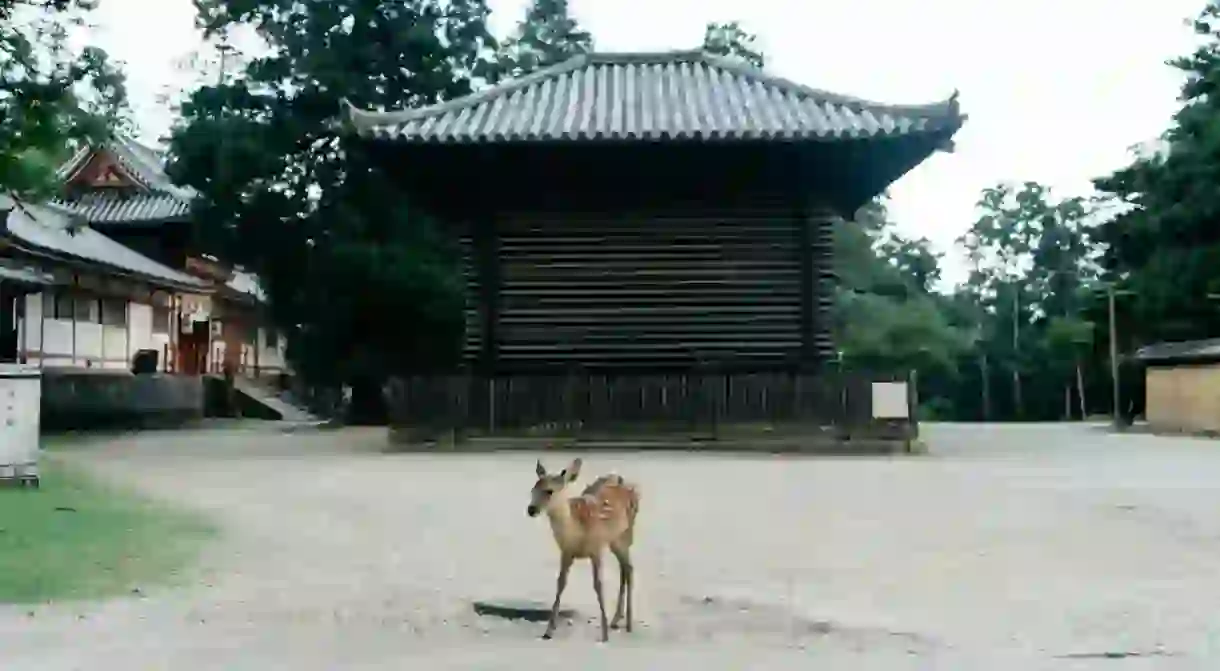Meet the Sacred Deer Ruling Japan's Nara Park

Many visitors to the Kansai region head straight to Kyoto, but one of Japan’s best cultural areas is not Gion, but the first capital city, Nara. While filled with plenty of wonderful temples and shrines, Nara also provides the opportunity to get up close and personal with animals once considered to be so holy that to harm them warranted capital punishment.

In Nara, the legend goes that a god of thunder, Takemikazuchi, traveled from Ibaraki prefecture to Nara sometime in the 700s. It is said he first appeared on the top of a mountain riding on a white deer. Takemikazuchi became one of the deities enshrined at Nara’s Kasuga shrine, thus the deer inhabiting the surrounding forest were deemed messengers of the gods and decreed sacred.


It was punishable by death until the 1600s to harm one of these creatures. Even seeing a deceased deer and failing to report it was a punishable offense. To see these deer alive was considered a good omen from the gods and people would bow low to them to show honor to the sacred animals. After World War II, their holy status was lowered to the slightly less distinguished National Treasure.

Over a thousand years ago, Kujo Kanezane, a high-ranking government official, was inspecting a temple in Nara when a deer entered the hallway despite a heavy crowd. Kujo recounted joining his hands together and bowing low to the animal and being so overcome that he cried. It’s been a few centuries since Kujo visited Nara, but the sacred deer of Nara Park are still delighting visitors to this day.


While not considered divine by most today, the deer are Nara’s biggest draw for many visitors. With a population of about 1,200, the deer have free range over most of Nara Park and the surrounding mountains. Traffic jams have been known to occur simply because a deer would not be moved off the roads. Japan may have modernized, but these deer haven’t.



Today these deer may elicit many squeals of “kawaii,” there are some things to be aware of when visiting. They may be used to humans, but they are still wild animals. They head butt, kick, jump, and bite. With an insatiable appetite, they grab any loose paper they can get their mouth on. There are vendors selling senbei, or rice crackers, for visitors to feed the deer and this is one of the most popular activities in Nara. It appears that many of the deer have learned that bowing low can result in a crunchy treat or two. However, the deer can get extremely aggressive towards people trying to feed them so watch fingers and gloves. Despite some naughty behavior, Nara’s deer continue to charm thousands of people from all over the world every year.
















